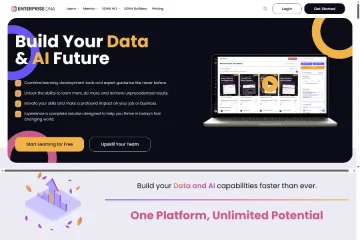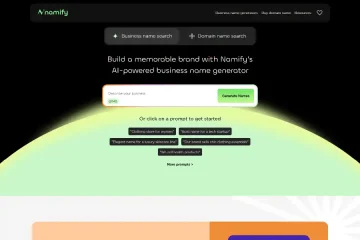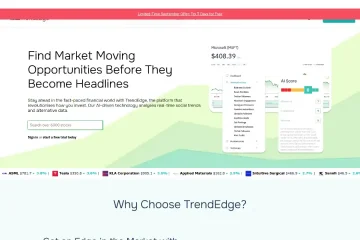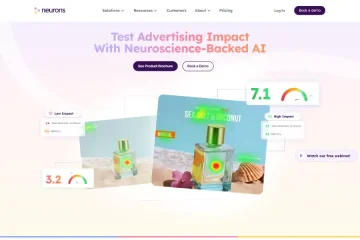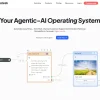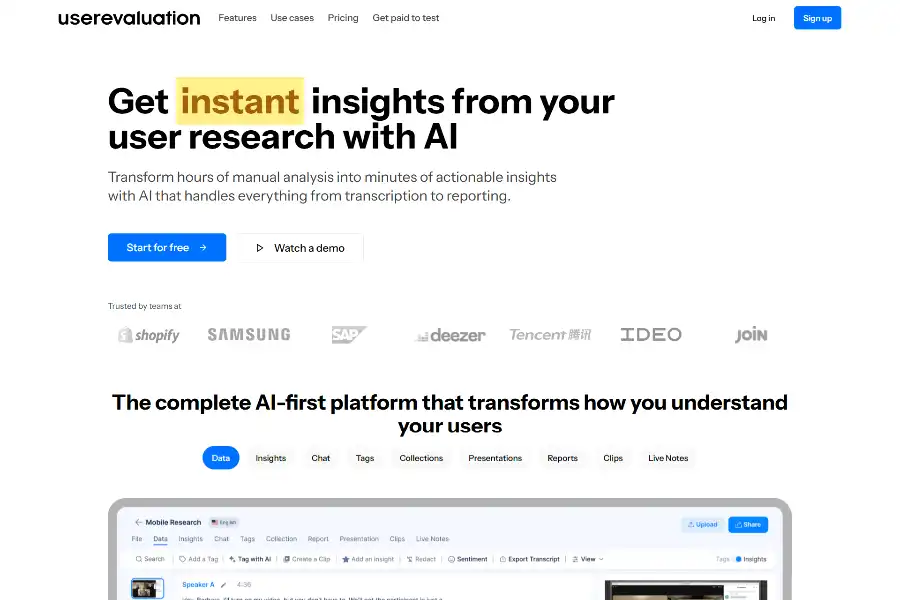
User Evaluation: The Definitive Guide to the AI-First User Research Platform
Introduction: Why User Evaluation Is Redefining Research Workflows
In 2025, product teams, UX researchers and customer-experience leaders are drowning in data yet starving for insight. Interviews pile up, transcripts lag behind, and critical evidence for the next roadmap decision remains buried in hours of recordings. User Evaluation—marketed as “the AI-first user research platform”—promises to turn that equation on its head by compressing days of manual analysis into minutes of AI-powered clarity. Built around a unified, multimodal AI engine, the platform ingests audio, video, text and tabular data, then delivers transcription, thematic synthesis, sentiment analysis and presentation-ready reports in one secure environment. This deep-dive explores the technology under the hood, the real-world use cases already proving ROI, and the strategic advantages that differentiate User Evaluation from both legacy research repositories and the new wave of AI point solutions.
Core Technology Architecture: How the “Unified AI System” Works
User Evaluation’s differentiation begins with architecture. Instead of chaining together discrete third-party models, the company has engineered an end-to-end pipeline that fuses automatic speech recognition (ASR), large language models (LLMs) and multimodal embeddings. The result is a single knowledge fabric that can reason across languages, media types and research objectives.
Multilingual ASR with Custom Vocabulary
The ASR layer is trained on 57 languages and continuously fine-tuned on domain-specific corpora. Users can override generic vocabularies by uploading glossaries—crucial for healthcare, fintech or any vertical with dense jargon. Speaker diarization and live timestamping occur in real time, reducing post-processing overhead.
LLM-Driven Synthesis & Tagging
Once audio is transcribed, proprietary LLMs classify utterances by intent, emotion and theme, then auto-generate hierarchical tags. These tags are not static; the model re-clusters insights as new data arrives, ensuring that longitudinal studies remain coherent even when research questions evolve.
Multimodal Chat Interface
The “Chat with AI” feature leverages retrieval-augmented generation (RAG) to ground every answer in source transcripts, video frames or survey rows. Users can ask, “What usability friction did first-time mobile users mention?” and receive an annotated clip reel plus a summary table citing exact timestamps.
Security & Compliance by Design
All processing happens in isolated containers with AES-256 encryption at rest and TLS 1.3 in transit. A zero-retention policy means user data is never reused for model training, addressing GDPR, HIPAA and SOC 2 Type II requirements without extra configuration.
Feature Deep-Dive: From Transcription to Board-Ready Reports
1. AI-Powered Data Analysis
Upload a 90-minute bilingual focus-group recording and, within three minutes, receive a sentiment heat-map, speaker contribution metrics and a 250-word executive summary. The engine surfaces statistically significant phrases (“easy to navigate” vs. “felt lost”) and links each to exact moments in the video.
2. Research Repository & Kanban Collections
Insights are not siloed. Everything lives in a centralized, searchable repository. Researchers drag key findings onto a Kanban board—labeled Problem Statements, Opportunities, Evidence—creating a living evidence wall that stakeholders can consult without opening a new tab.
3. Auto-Generated Reports & White-Label Templates
One click exports a 20-slide deck: problem overview, methodology, participant demographics, key quotes and next-step recommendations. Marketing teams can white-label the template so the final output carries corporate branding, eliminating the Saturday-night PowerPoint scramble before an executive review.
4. Redact PII on the Fly
Names, emails and payment information are scrubbed automatically using named-entity recognition. Researchers share clips externally without fear of breaching confidentiality, accelerating customer-validation cycles with prospects or partners.
5. Integrations & API Hooks
Native connectors push tagged insights to Jira, Notion, Slack and Productboard. A RESTful API allows enterprises to pipe data into proprietary data lakes, enabling mixed-methods research that marries User Evaluation outputs with telemetry or CRM data.
Market Applications & Case Studies
SaaS Product-Led Growth Teams
A Series-B productivity startup cut its user-research turnaround from two weeks to 48 hours. After integrating User Evaluation, PMs scheduled five moderated tests on Monday, had synthesized pain points by Wednesday and shipped an onboarding fix the following sprint. Activation rate for new accounts rose 18 % within a month.
Healthcare UX
A telehealth provider needed to understand why elderly patients abandoned video consultations. With multilingual transcription and sentiment analysis, researchers discovered that Spanish-speaking users struggled with appointment reminders that lacked proper tú/usted tone. Updating the copy reduced no-shows by 27 %.
Financial Services Compliance
A global bank used the platform to analyze 200 customer-support calls for signs of mis-selling. Auto-tagging surfaced high-risk phrases (“guaranteed returns”), enabling the compliance team to prioritize call reviews and avoid regulatory fines.
Agencies & Consultancies
Design agencies white-label the reporting output to deliver polished insight packs to clients. One London consultancy reported a 40 % reduction in report-production hours, freeing strategists to sell additional discovery sprints.
User Feedback & Community Sentiment
Public reviews on G2 and Product Hunt converge on four themes:
Speed Gains
“Tasks that took our team three days now take 30 minutes. We literally schedule synthesis sessions right after the last interview ends,” wrote a senior UX researcher at a Fortune 500 retailer.
Multilingual Accuracy
Non-English teams praise the platform’s handling of Japanese honorifics and Arabic dialects, noting fewer post-edits compared to generic transcription services.
Learning Curve
Early users report that the Kanban collections and tagging taxonomy require an hour of onboarding. However, once templates are set, junior researchers can contribute high-quality insights without supervision.
Supporto aziendale
Large accounts highlight responsive Slack channels and dedicated customer-success managers who help create custom vocabularies and compliance playbooks.
Competitive Landscape: How User Evaluation Stands Out
The user-research tooling space is crowded with transcription services (Otter.ai, Trint), repository platforms (Dovetail, Condens) and emerging AI co-pilots (Notably, Marvin). User Evaluation’s moat lies in the depth of its unified pipeline:
Depth vs. Breadth
Where competitors stitch together separate ASR and GPT wrappers, User Evaluation’s end-to-end ownership yields lower latency and richer context—speaker IDs persist into final reports, and sentiment scores tie directly to tagged themes.
Security Parity at Scale
While Dovetail and Condens also claim SOC 2 compliance, User Evaluation adds HIPAA readiness and zero-data-retention clauses in standard contracts, removing procurement friction for health and finance verticals.
Price-to-Value Ratio
At roughly $0.09 per transcription minute plus unlimited seats on its Growth plan, User Evaluation undercuts enterprise tiers of legacy platforms by 30-50 % while delivering AI synthesis that older tools still roadmap for Q4.
Pricing & Accessibility
User Evaluation operates on a freemium model:
Free Tier
60 transcription minutes and three AI-generated reports per month—ideal for freelancers validating product-market fit.
Growth Plan
$39 per user per month (billed annually) unlocks unlimited projects, 57-language transcription and API access.
Enterprise Plan
Custom pricing secures SSO, HIPAA compliance, custom data residency (EU, US, APAC) and white-glove onboarding. Notable clients include two of the top five global banks and a FAANG-scale social platform.
Future Roadmap & Strategic Outlook
According to recent talks by the founders, the 2025-2026 roadmap focuses on predictive insights: the AI will not only summarize what users said, but forecast which themes predict churn or expansion revenue. Upcoming integrations with product-analytics vendors (Amplitude, Mixpanel) will allow mixed-methods datasets where qualitative pain points are correlated with quantitative funnel drops. On the horizon, User Evaluation is experimenting with generative synthetic users—AI personas seeded by real interview data—to pre-validate concepts before recruiting additional participants. If successful, the platform could evolve from a post-hoc analysis tool into a proactive design partner.
Conclusion: Should Your Team Adopt User Evaluation?
If your organization is scaling user research faster than your headcount, User Evaluation offers a rare combination of speed, security and depth. It is not a lightweight add-on; it is a strategic layer that turns raw conversations into board-level evidence. Teams still running manual tagging in spreadsheets will see the most immediate ROI, while mature research ops groups can leverage the API to weave qualitative insight into broader data ecosystems. With a generous free tier and transparent upgrade path, the barrier to experimentation is low, yet the ceiling for enterprise-grade customization is high. In short, User Evaluation is positioned to become the default operating system for AI-driven user research—whether you are a seed-stage startup or a regulated multinational.

